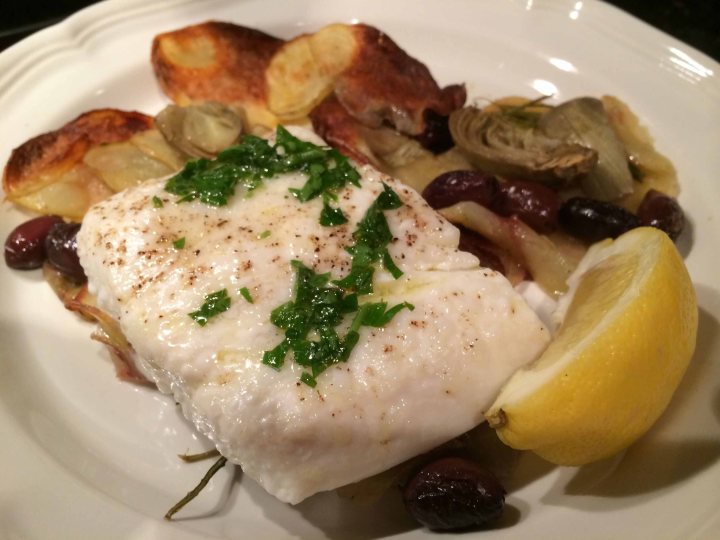I know it’s summer, but despite the season, I was in the mood for beefy comfort food last night, specifically: pot roast. However, time got away from us yesterday and we got home way too late to prepare a traditional roast. I then remembered a recipe for a pressure-cooked version in Pressure Cooker Perfection from America’s Test Kitchen.
It’s a four-step recipe that yields a perfectly cooked pot roast in 30 minutes under high pressure. With releasing pressure and skimming the sauce, I had the roast on the table in a little more than an hour from start to finish.
The key to this recipe is a “secret ingredient,” something that you’ll probably never find in a gourmet store or even in the fine-foods section of a grocery. It’s not imported and it sells for under $2.00. It’s condensed French onion soup. I used Campbell’s; I don’t know of any other.
If the thought of using this ingredient turns you off, the recipe may still win you over with its use of dried porcini. It yields an aromatic, juicy roast with creamy, flavor-infused potatoes. Granted you may not want to make this roast this summer, but when fall approaches, you may want to give it a try.
Note: Before attempting this recipe, be sure you are thoroughly familiar with your pressure cooker. Read the manual to know its capacity and to understand how to lock the lid, the cooker’s high-pressure indicator, the methods of releasing (natural and quick release), and the like.
Weeknight Pot Roast and Potatoes Adapted from Pressure Cooker Perfection by America’s Test Kitchen
Ingredients
1 ounce dried porcini mushrooms (the original recipe calls for 1/2 ounce)
1 can (10.5 oz) condensed French onion soup
2 tablespoons tomato paste (I recommend the double concentrate from a tube.)
1/4 teaspoon ground cumin (not in the original recipe)
2.5 – 3 pound boneless beef chuck-eye roast, trimmed and cut across the grain into 1 inch slices
2 pounds small or medium Yukon Gold potatoes, washed
1 – In a small bowl, rehydrate the mushrooms in 1/2 cup warm water for about 20 minutes; remove the mushrooms from the water, squeezing any excess water back into the bowl. Strain the soaking water through a coffee filter or strainer lined with cheesecloth to remove any grit and reserve. Mince the mushrooms.
2 – Whisk soup, tomato paste, mushrooms, and their strained soaking water in the pressure cooker pot. Lay the sliced meat over the mixture. Season with ground cumin. Place the potatoes on top of the meat. Lock the pressure-cooker lid in place and bring to high pressure over medium-high heat. As soon as pressure cooker reaches high pressure, reduce the heat to medium-low and cook for 30 minutes, adjusting heat as needed to maintain high pressure.
3 – Remove the pressure cooker from the heat and allow the pressure to release naturally for 15 minutes. Quick release any remaining pressure, then carefully remove the lid, allowing steam to escape away from you.
4 – Transfer meat and potatoes to a warmed platter. Using a large spoon, skim excess fat from the surface of the sauce. Serve the meat and potatoes with the sauce.
Wine Pairing: Cabernet Sauvignon




























